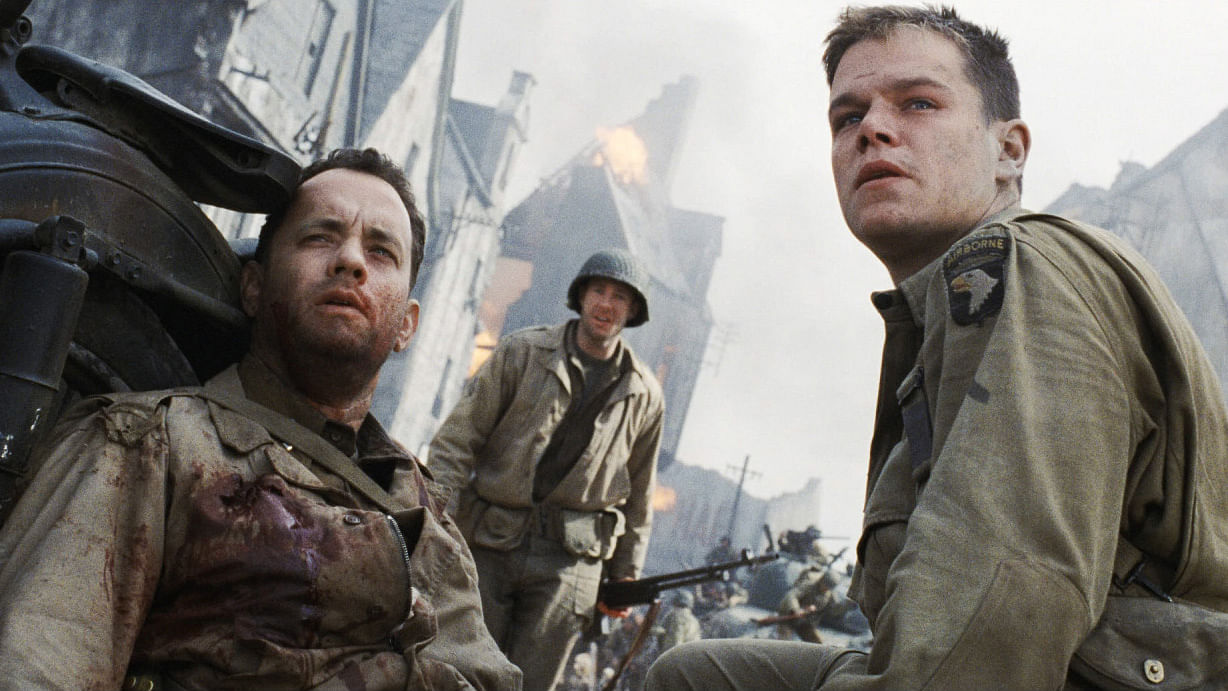5 Signature Styles You’ll Find in Spielberg’s Historical Movies
Here are five predictable styles you will recognise in most of Steven Spielberg’s period films

There are two kinds of Steven Spielberg, one who makes blockbusters by going all out with the visuals, making them all very different from one another, and the second who makes historical cinema on a canvas that remains largely similar. As Spielberg’s latest period thriller Bridge of Spies releases in theatres, listed below are five signature ‘Spielbergian’ styles of filmmaking that he incorporates in his historical movies:
1. The Spielberg Face
This is not just prevalent in his historical films but all his films in general. Characters look towards something in front of them, totally mesmerized, either in awe or shock or sometimes both. Pick any film and there’s always a scene like this. A few filmmakers have tried to borrow this style to less results because only Spielberg is capable of directing the actors well enough to not make the scene corny. The audience is in awe, looking at the characters in awe – it’s a powerful tool that reels you in.
2. The Whitewashing of Characters
Hollywood is often guilty of lying through their teeth about certain real life characters, and Spielberg is at the forefront of this filmmaking style. Every protagonist in his historical films is largely a good guy trying to do good things in times of adversity. Whether it’s Lincoln or Oskar Schindler or Captain Miller from Saving Private Ryan, you only get to know how great these people were. You’re never told about their darker shades because they’re heroes. Ironically the least heroic historical character of Spielberg’s is Indiana Jones who is often seen as a calculating, double-dealing womanizer. All that changed with Crystal Skull, of course, when Indy got married.
3. Family Values
Pick any Spielberg film and you’ll notice scenes pertaining to the protagonist’s family. It’s either a dinner table conversation, or phone calls, or the character gazing at a happy family in the kitchen, or ridiculous sex scenes – there’s always something that harks back to the protagonist’s family being involved with the plot. Even if they don’t present anything important, the family scenes are shoehorned in, but they don’t stick out like a sore thumb because Spielberg directs them so well. And if you look closely the protagonists are almost always great family men, which may indicate catharsis for Spielberg whose parents split up when he was a teenager.
4. Returning Home
Cinque the slave from Amistad is dragged away from his home, as is Avner from Munich, Jim (a young Christian Bale) from Empire of the Sun, the man from The Terminal, and even the horse from War Horse. Every central character in Spielberg’s historical films dreams about going back home. In fact everyone in Saving Private Ryan wants to return home, and is upset about being dragged on a mission to bring a presumably dead soldier back home. Home is the thread that connects every historic Spielberg film, probably because as a filmmaker who has a film out every two years he seldom gets to spend time at home.
5. Accented English
To make things more commercialised and accessible, Spielberg always utilises a technique that makes one cringe – foreigners speaking English in their respective foreign accents. There is no logical reason why Germans in World War 2 would chat in English, or why Oskar Schindler would speak to Stern in English, but in Spielberg’s films they do so that we can understand them. Spielberg has finally ended this trend in the latest film Bridge of Spies where characters in East Germany actually speak to each other in German – even subtitles aren’t included.
(Mihir Fadnavis is not only a film critic and journalist but also a certified film geek who has consumed more movies than meals.)
(At The Quint, we are answerable only to our audience. Play an active role in shaping our journalism by becoming a member. Because the truth is worth it.)